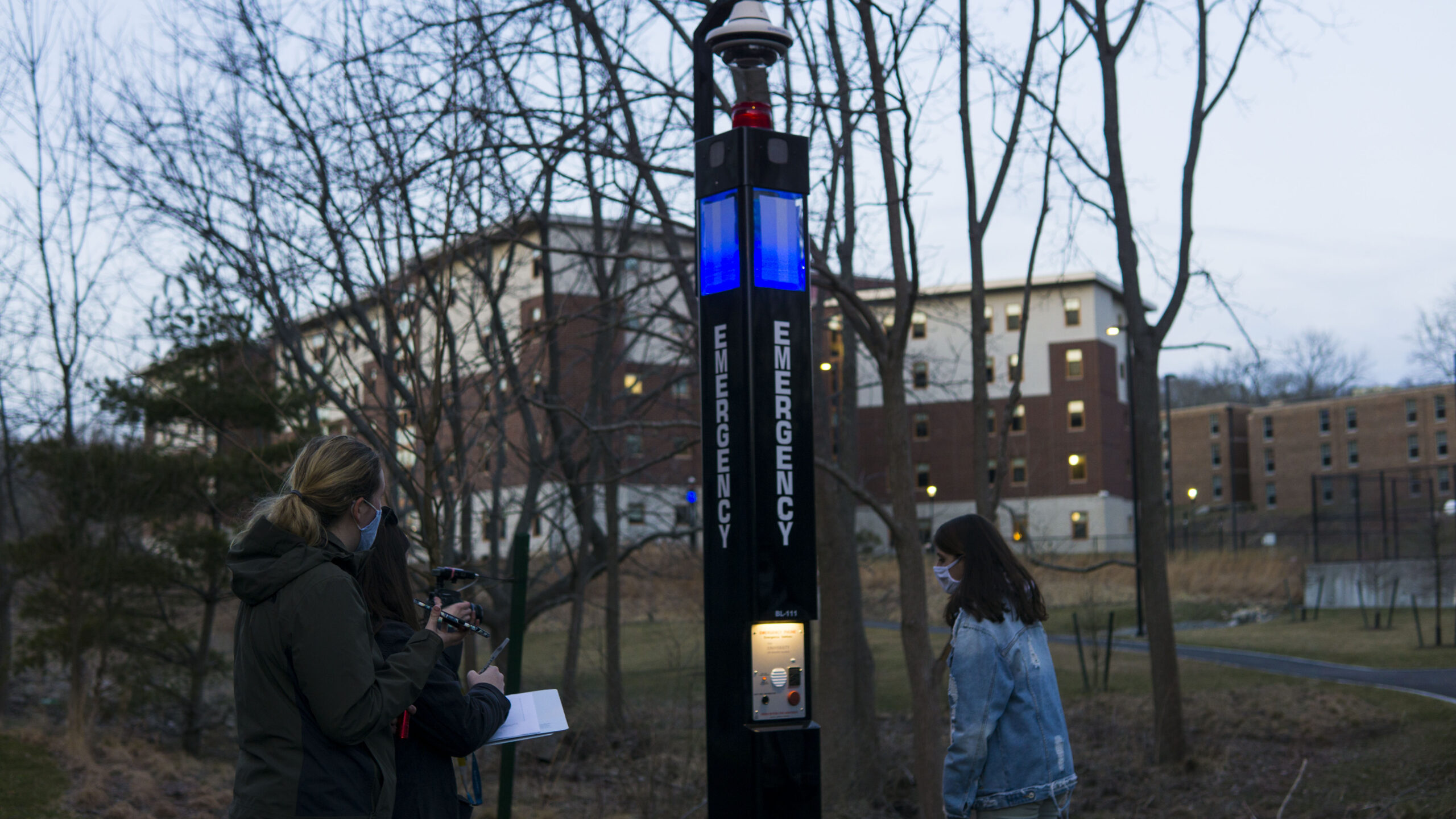Members of the URI community shaved their heads and donated their hair to raise money and awareness for pediatric cancer this week. Photo by Ethan Pellegrino.
The University of Rhode Island Student Senate held its annual Blue Light Walk this past Tuesday in order to ensure that campus blue lights are fully functional.
The blue light system, designed to ensure the safety of students at night, which has over 100 phone boxes with blue lights above them to contact the Public Safety Office, according to Stephen Baker, the Director of Public Safety and Chief of the Campus Police.
Students can use these blue lights in case of an emergency or if they’re in need of assistance.
Senators and volunteers are divided into groups to test if the lights are operational. Any problems or defects that are found are reported to Public Safety who work to repair the lights within a week, according to Baker.
Volunteers were split into four smaller groups and visited fifty lights around campus. The groups mainly consisted of Student Senate members, a few of which were accompanied by safety officers.
Each group had a designated section of campus where they activated blue lights to see if the call function worked and if the light went on. The emergency button would be pressed and the ideal result would include a flashing blue light on top and a dispatch officer answering the call and saying what light the call was coming in from, in order to make sure that no lights are mislabeled numerically.
In the past, the blue lights had a keypad to enter a number, but more and more lights have been changed to a simpler two-button phone— one to reach police dispatch and another to get a safe ride.
The Senate members recorded the result of each test, where the light is located and if there were any other problems to report back to the Public Safety Department.
In one case, a light was out but the call function was still able to reach the dispatch for Public Safety. Another light had a working bulb, but the speaker was weak and the dispatch officer said they could barely hear from the other end.
“Ninety two percent of them had perfectly working call functions. However, 24 percent of all the lights had issues with the lighting,” Student Senate Campus Affairs Committee Chair Michael Bentley said in his report after the event.
Many lights have a security camera that allows police dispatch to see the source of a call. Additionally, each of the lights has a locator in them, which allows the campus police to know where a caller is calling from.
The campus police can get to the lights within two minutes after receiving a call, according to Ed Vasquez, the head of information technology at Public Safety.
“The lights are predominately used for their safe-ride function, which allows students to call for a safety vehicle to transport them to their destination safely,” Chief Baker said. “Due to COVID-19, we are now offering safe walks where a police or safety officer will walk with the student.”Students who are not near a blue light can also get a safe walk or ride by calling 1-401-874-7233. This number goes directly to Public Safety but is designated to the dispatch for safe rides so that it doesn’t get mixed up with the other calls for emergencies or other needs on campus.

